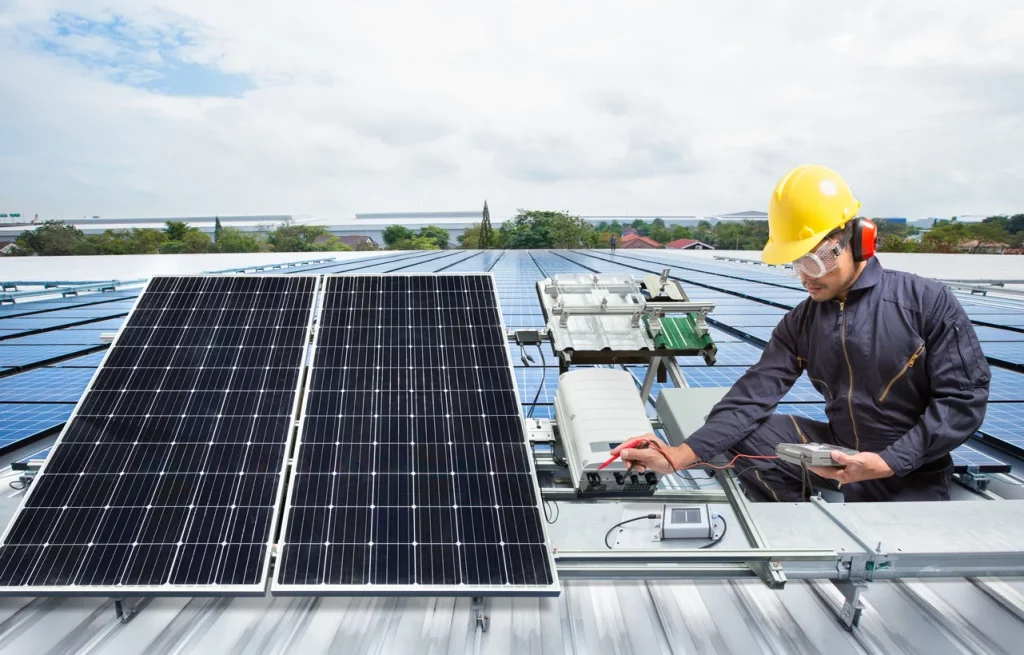As 2025 unfolds, the global energy landscape is shifting faster than ever. For decades, fossil fuels powered homes, industries, and transportation. But now, solar energy is emerging as a strong, cleaner alternative. It offers cost savings, sustainability, and independence from volatile fuel markets.
With new technologies and storage options improving efficiency, solar is transforming how we think about energy. At the same time, fossil fuels remain important for reliability and grid stability. The key question for homeowners, policymakers, and businesses is: which energy source makes more sense in 2025 and beyond?
Understanding how solar and fossil fuels work
Solar power basics
Solar energy converts sunlight directly into electricity using photovoltaic (PV) panels. These panels generate direct current (DC), which is then converted into alternating current (AC) through an inverter. The AC power is what households and the electrical grid use.

One of the biggest advantages of solar is that sunlight is free and available almost everywhere. Solar panels do not need fuel or water to operate, and once installed, maintenance is minimal. Paired with batteries, solar energy can power homes even when the sun is not shining.
fossil fuels explained
Fossil fuels, coal, oil, and natural gas, are formed from organic matter buried and compressed over millions of years. Power plants burn these fuels to produce heat, which then drives steam turbines to generate electricity.

This process allows continuous power generation but at a high environmental cost. Burning fossil fuels releases greenhouse gases (GHGs) like carbon dioxide and methane, which trap heat in the atmosphere and contribute to climate change.

How solar and fossil fuels compare in 2025
The table below summarizes the major differences between solar and fossil fuels based on verified 2025 data.
| Category | Solar Energy | Fossil Fuels |
| Generation method | Converts sunlight into electricity using photovoltaic cells | Burns coal, oil, or natural gas to create steam or pressure that drives turbines |
| Average cost of new electricity (LCOE) | $0.038–$0.078 per kWh (PV Magazine USA, 2025) | $0.048–$0.109 per kWh for new natural gas plants (Scientific American, 2025) |
| Emissions (CO₂ equivalent per kWh) | About 46 g CO₂-eq/kWh (Community Power Magazine, 2025) | 490–820 g CO₂-eq/kWh depending on fuel type |
| Capacity factor | 20–30% depending on sunlight and location | 80–90%, can operate continuously |
| Operational cost | Minimal, no fuel required | High due to fuel, maintenance, and regulatory costs |
| Environmental impact | Clean, renewable, no air pollution | Emits carbon dioxide, sulfur dioxide, and other pollutants |
| Installation time | Few weeks to months depending on project size | Several years for large-scale power plants |
Solar’s major advantages
1. lower costs and rising competitiveness
In 2025, solar is consistently cheaper than new fossil fuel generation. The International Renewable Energy Agency (IRENA) reported that 91% of new renewable capacity added globally in 2024 was cheaper than fossil fuels.
This drop is driven by falling equipment prices, improved panel efficiency, and supportive government incentives. Once installed, solar systems have near-zero operational costs because sunlight is free, making long-term electricity prices stable and predictable.

2. environmental sustainability
Solar panels produce energy without releasing harmful gases or particulates. Over its lifetime, a typical residential solar system offsets tens of tons of CO₂ that would otherwise be emitted from fossil fuel plants.
In addition to reducing air pollution, solar power requires little to no water for operation, unlike fossil fuel plants that depend heavily on water for cooling.

3. Scalability and flexibility
Solar can power anything from a single rooftop to an entire industrial complex. Its modular design means systems can be added gradually, allowing businesses or utilities to scale with demand.
Fossil fuels, on the other hand, require massive centralized facilities, pipelines, and distribution systems that take years to build and maintain.
Where fossil fuels still have an edge
Fossil fuels still hold advantages in reliability and energy density. They can operate continuously, making them ideal for base-load power, electricity that is needed around the clock regardless of weather conditions.
Solar energy depends on sunlight, which varies throughout the day and across seasons. Without adequate battery storage or grid support, solar alone cannot provide continuous power. However, the rapid advancement of battery technologies like lithium iron phosphate (LFP) and solid-state batteries is narrowing this gap.
The future of energy
Fossil fuels helped build the modern world, but their limitations are becoming clearer every year. They are expensive to maintain, environmentally harmful, and subject to volatile markets.
Solar energy, on the other hand, represents energy independence, sustainability, and cost control. It can integrate with smart grids, storage systems, and electric vehicles, making it central to the future of clean power.

While fossil fuels will remain part of the mix for some time, especially for industries requiring constant power, the global trend is clear: solar energy is on track to dominate future generation.
Conclusion
In 2025, choosing between solar and fossil fuels is about more than just energy, it’s about the future we want to build. Solar is cleaner, increasingly cheaper, and more adaptable to the evolving needs of homes and businesses.
Fossil fuels may still provide stability today, but solar offers sustainability tomorrow. As technology continues to advance and costs keep falling, the sun is quickly becoming the most reliable energy source humanity has ever known.
sources
- International Renewable Energy Agency (IRENA) — Renewable Power Generation Costs 2023
- Reuters — Around 90% of Renewables Cheaper Than Fossil Fuels Worldwide (2025)
- Scientific American — Wind and Solar Energy Are Cheaper Than Electricity from Fossil Fuel Plants (2025)
- PV Magazine USA — Solar Cost of Electricity Beats Lowest-Cost Fossil Fuel (2025)
- Community Power Magazine — Solar Energy vs Fossil Fuels: Cost and Efficiency Analysis
- Financial Times — Clean Tech Investment Set to Hit $2 Trillion in 2024




